HOW THE RAMSBURG FAMILY TRADING-CARD COLLECTION SURVIVED MORE THAN A CENTURY OF OBSTACLES
By Joe Orlando
Enlarge
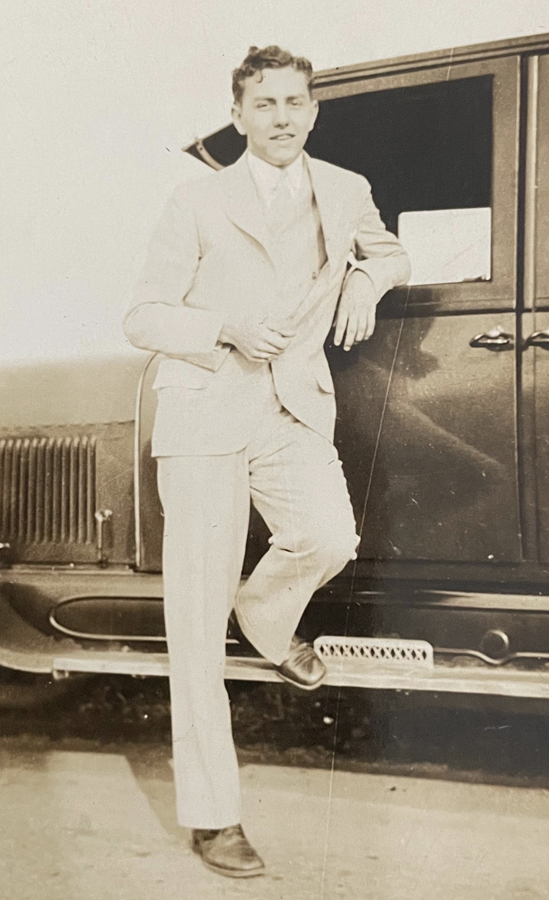
Over the summer, I received a LinkedIn notification from Susan Sherman, who expressed interest in discussing a card collection. Susan’s late mother, Anne Ramsburg Jones, had left a handwritten note to her children with my name on it. It referred to a conversation Anne and I had about her family’s collection at a National Sports Collectors Convention in Baltimore about 10 to 12 years ago. Anne listed me as a contact in case something happened to her and the remaining family members needed guidance.
After connecting online, Susan and I eventually spoke over the phone. She explained how a “sizable” collection of late-19th-century and early-20th-century trading cards came into her family’s possession. It was first put together by her grandfather, J. Richard “Dick” Ramsburg, who started collecting as a child. An avid collector of cards, toy trains, stamps and lead soldiers, he was also quite an athlete, excelling in tennis in the 1920s and ’30s. In fact, he was inducted into the YMCA’s Alvin G. Quinn Sports Hall of Fame in 1992.
Decades after it was assembled, the collection was passed down from Dick to Susan’s mother, Anne. Susan, along with her two brothers, Dick and Steve, inherited the collection upon their mother’s passing earlier this year.
The collection had been part of their family for well over 100 years. It survived decades of the usual hurdles and pitfalls that collectors are oh-so-familiar with, not to mention the Great Depression, two World Wars and more. These days, it is extraordinary for an original-source, vintage collection to be intact, especially from this era. There were so many opportunities for the collection to be sold or discarded. In fact, according to Susan, there was a moment in the distant past when her mother considered letting go of the cards but thankfully changed course after Anne’s husband, Marvin Jones, and her three children expressed their sentiments.
Steve, one of Anne’s three children, recalls a precise moment when the collection seemed doomed. In 1983, Anne’s mother passed away, and as an only child, Anne took the news particularly hard. While cleaning out her childhood home in Maryland, and in a moment of weakness, Anne instructed Steve to move the cards from the third-floor attic and leave them on the porch outside, hoping that someone would want them and take the collection away.
Enlarge
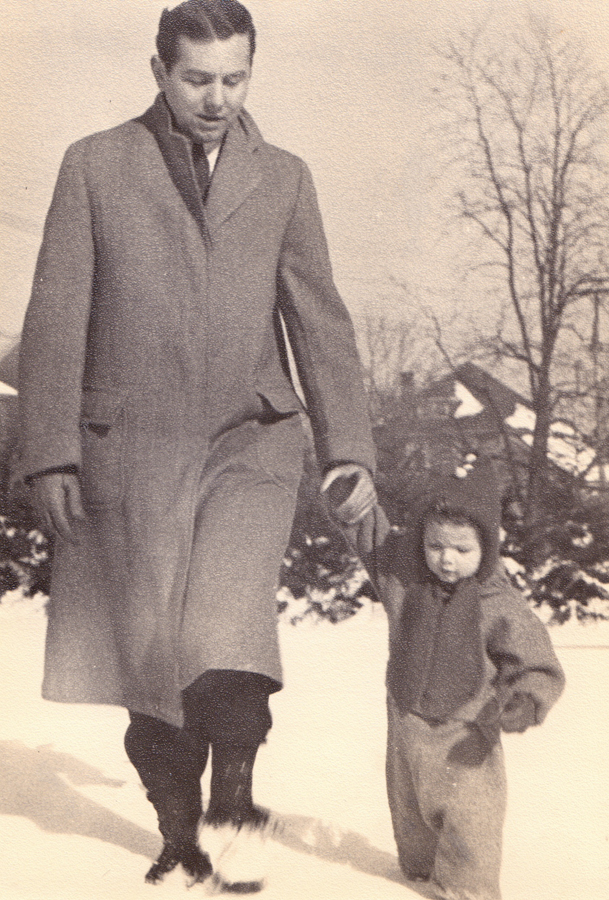
Steve and his brother decided to make their stand after taking a deep dive into the collection. While digging through the boxes, they found a note from their grandfather. It was written to their mom and read, “Anne, someday the boys might be interested in these.” Susan, their sister, was not yet born when the note was written. That note helped change Anne’s opinion about the collection, as did the pleas from her two sons.
While combing through the collection’s contents, the family found other handwritten notes, including one offering advice in case Dick’s grandchildren weren’t interested in taking the hobby baton from him and running with it. The message read, in part, “If you don’t think the boys want them, they are worth some money.” He suggested contacting J.R. Burdick “to help dispose of them.” For those familiar with card cataloging history, the J.R. Burdick mentioned is the J.R. Burdick – or Jefferson Burdick, as he is more commonly known. Regarded by many as the “Father of Card Collecting,” Burdick created The American Card Catalog, which contains a classification system for many of the iconic sets that operate as the foundation of the hobby. Burdick also helped produce the Card Collector’s Bulletin, which started in 1937.
Thankfully, Burdick was never contacted, and the cards stayed put.
For much of its life and while in the possession of the grandfather – before the hobby would become a nationwide phenomenon – the colossal cardboard treasure had what most would consider nominal monetary value, but it clearly held a special place in Dick’s heart. Once Anne brought the collection to her residence in Florida, the cards survived countless hurricanes and tropical storms. Through it all, the collection remained, no matter how many times it seemed bound to disappear.
To Susan and her brothers, the trove is more than just a collection of cards. It is an heirloom and a symbol of their late grandfather. The collection is a product of his effort, passion and care. For the collection to survive all these years, that same standard of care was employed by Anne and Marvin, who spent the time better organizing the collection once it became their responsibility. We are all temporary custodians of our collectibles, and the couple embraced the role of preserving a part of their family history. Mom and Dad ensured its safe arrival for their children today.
Concluding to sell and let others enjoy the fruit of their grandfather’s endeavor has been bittersweet for Anne and Marvin’s three children. On one hand, they are letting go of something that has been a family fixture since long before the siblings were born. On the other hand, they want to honor their grandfather and parents by handling the collection and its presentation to the collecting world the right way. That was made clear from the start of our communication, but it was time for the cards to find another custodian.
So, what is contained in this vast collection? Let’s begin with The Monster.
Enlarge
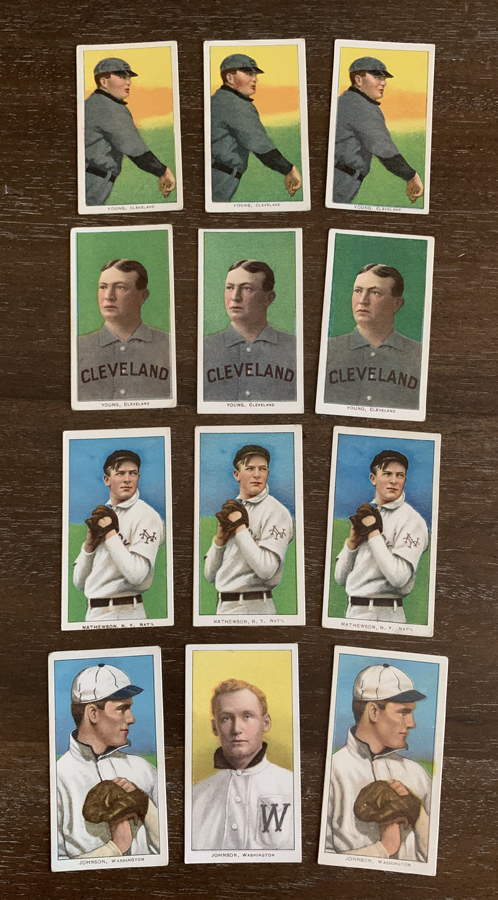
Experienced collectors will recognize that nickname right away. It is the moniker the collecting community gave the 1909-11 T206 baseball card set as it reached iconic status. The set’s sheer size, assortment of errors and abyss-like depth due to the multiplicity of back/factory/series combinations make it one of the most popular yet imposing issues of all time. T206 is like a gargantuan onion; the more you peel back the layers, the more you find underneath.
The collection contains approximately 3,300 T206s. No, that is not a typo. If you are doing the math at home, that is the equivalent of more than six complete sets of the basic composition. More importantly, there are well over 500 cards featuring Hall of Famers in this part of the collection. That includes 31 Ty Cobbs, 18 Walter Johnsons, 18 Christy Mathewsons and 19 Cy Youngs, to name a few. Of course, each player can be found on cards with different poses, so the spread between them ranges from relatively even to weighted heavily in one direction. The bottom line is that the star power is palpable.
While there is no doubt that T206 operates as the foundation of the overall collection, the highlights don’t end there. Baseball was in their grandfather’s blood. Amongst other issues are roughly 500 1911 T205 Gold Border and 400 1912 T207 Brown Background cards, along with an 1887 N28 Allen & Ginter set, which features baseball and a host of other subjects. There are more Cobbs, Johnsons, Mathewsons and Youngs, along with the likes of Cap Anson, Tris Speaker and a selection of rarities in the non-T206 group. In addition, there are even some boxing cards included, like those featuring former heavyweight champ Jack Johnson.
Enlarge

Non-sports cards, with a particular emphasis on military figures, are also represented. Thousands of cards from this genre are included, such as 1888 N78 (History of Generals), 1910 T79 (Military Series), 1910-11 T80 (Military Series) and 1888 N224 (Kinney Tobacco Military Series), as well as plenty of 1909-11 T59 (Flags of All Nations) and 1910 T73 (Indian Life) cards. The noted card issues are just a sampling. Baseball accounts for most of the value within this collection, but the artwork showcased throughout the non-sports card sets of this vintage can be stunning.
Enlarge
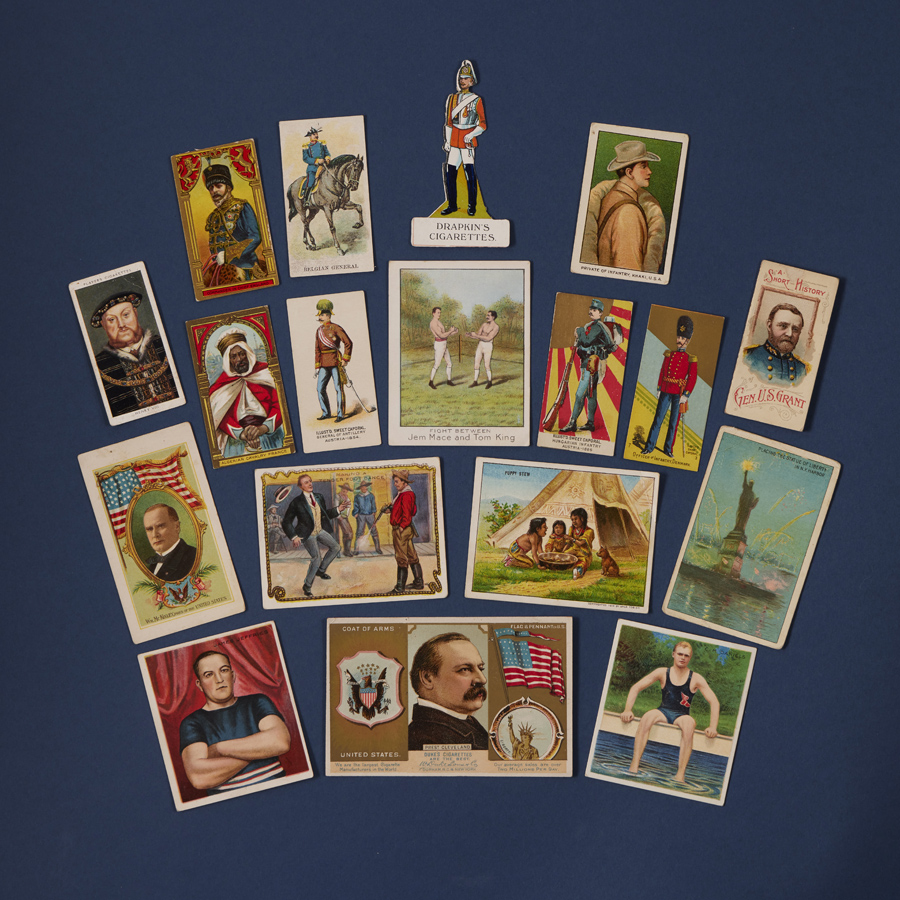
Altogether, over 10,000 cards from the era have resided in the Ramsburg collection since their initial distribution over a century ago. After starting the collection years earlier, their grandfather would continue to expand it, mainly through the mail by trading with fellow hobbyists. It was a vastly different time to be a collector – long before the market was forever changed in the 1980s and before the internet emerged in the 1990s.
Ironically, while many of the cards are connected to tobacco products, Dick never smoked a cigarette or used any other kind of tobacco his entire life. Though he passed away in 1968 after a lifetime of collecting, his assemblages live on.
Enlarge
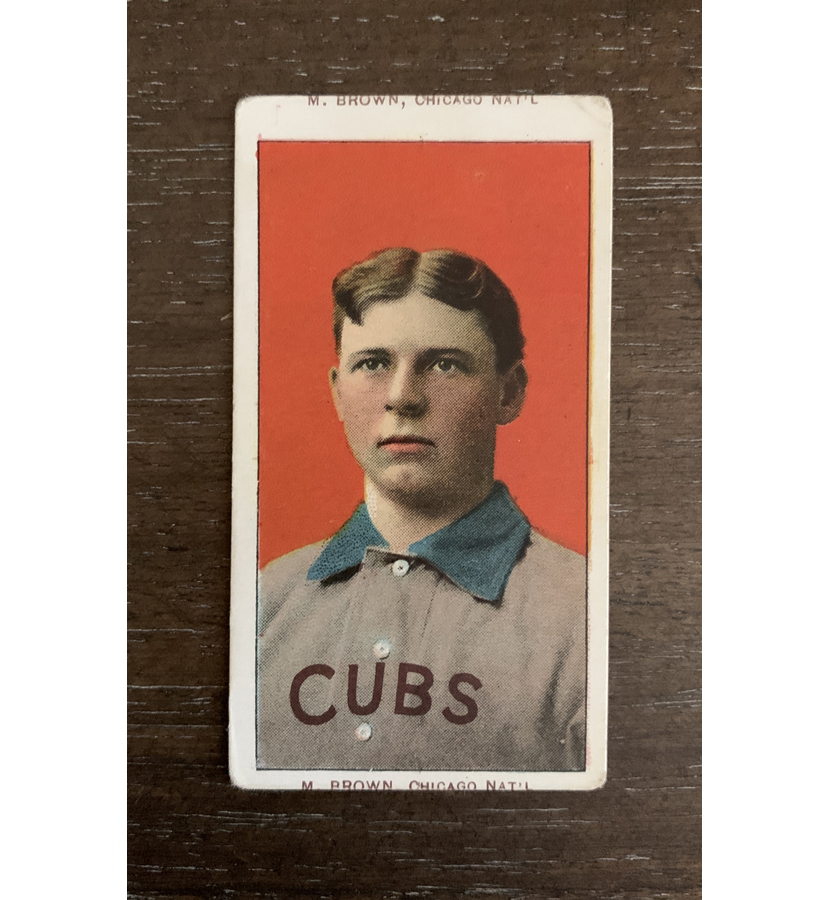
Enlarge
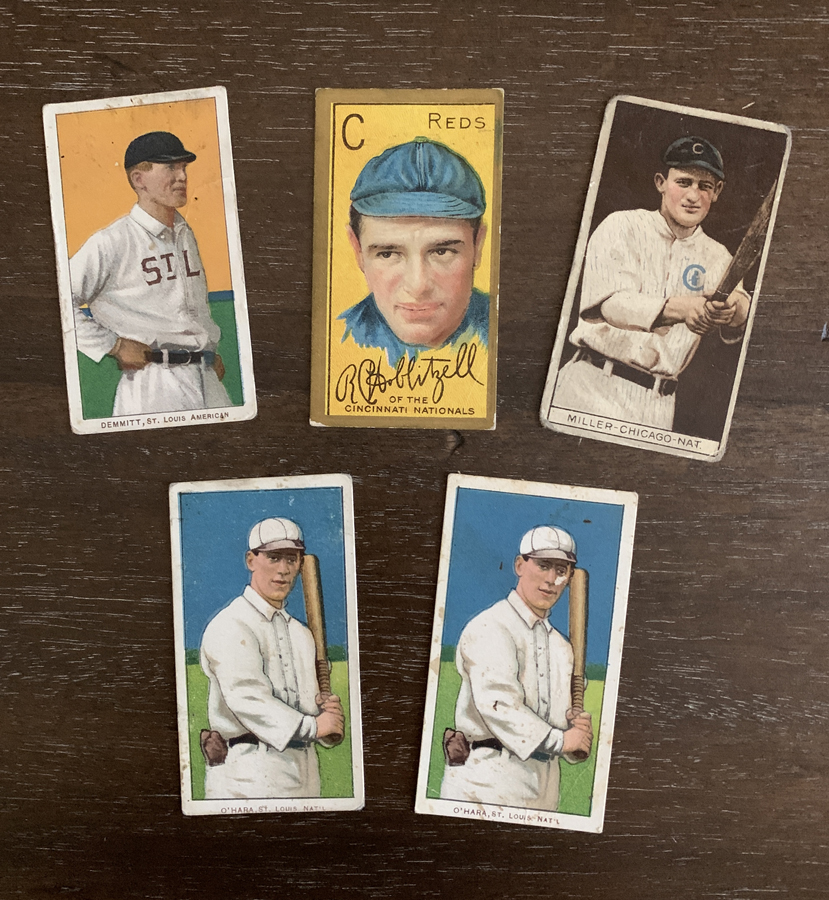
The collection is currently being sorted and inventoried, while select cards are being submitted for grading as part of the auction preparation process. For hobby veterans like me, stories like this have become few and far between, as so many ungraded card collections have been brought to light since the advent of the third-party concept itself. As a result, this is undoubtedly one of the most newsworthy hobby stories of recent times and one of the most intriguing because of the collection’s lineage.
Starting in 2024, Heritage Auctions will be privileged to bring the Ramsburg collection to market, beginning with our vaunted February Platinum event. The collection will be divided into sections, including single card lots and group offerings, and over multiple future auctions. It traveled three generations to get here; now, pieces of it can also become part of your collection and family history.
 JOE ORLANDO is Executive Vice President of Sports at Heritage Auctions. He can be reached at JoeO@HA.com or 214.409.1799.
JOE ORLANDO is Executive Vice President of Sports at Heritage Auctions. He can be reached at JoeO@HA.com or 214.409.1799.

